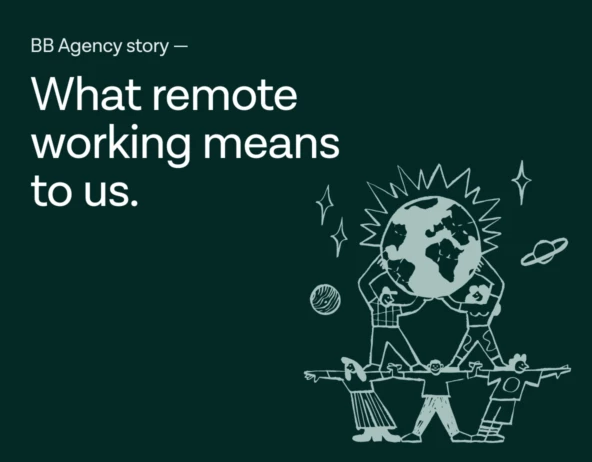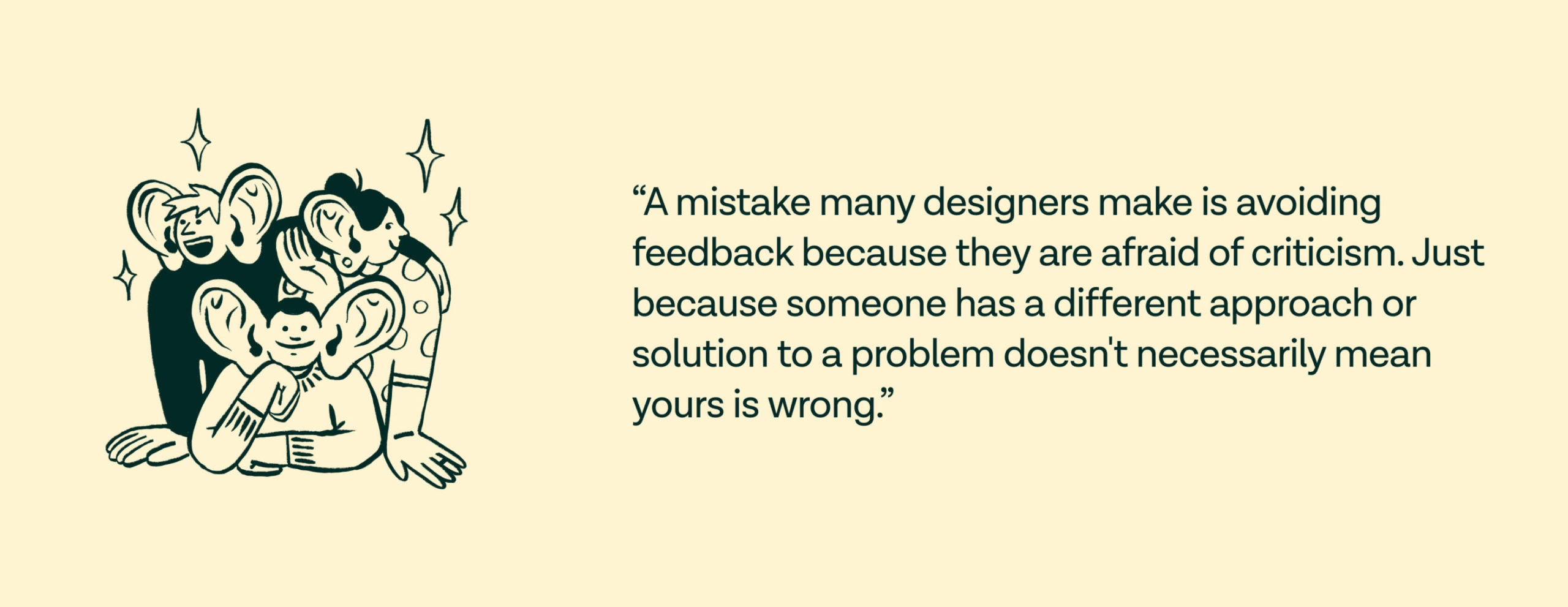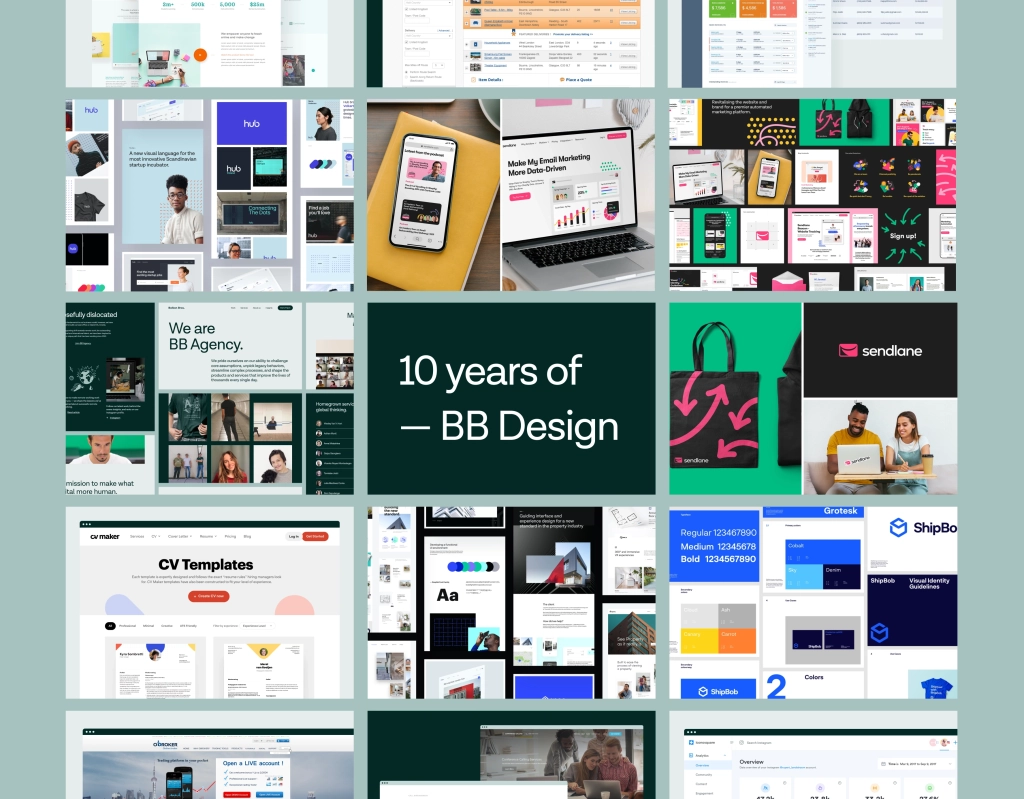
10 tips for UX designers who are kicking off their careers

It’s nearing a year since I started working in a design agency, and found myself interested in becoming a UX designer. I felt very lucky to get this opportunity, considering it was my first working experience, and I did my best to show the managers that they didn’t make a mistake.
During the last year, I acquired a lot of knowledge by completing multiple courses, being mentored and supported by my colleagues, and engaging in discussions about different topics and trends. Also, I gained plenty of practical experience while doing all that. I started with smaller tasks, then moved on to more complex ones, and also got an opportunity to collaborate with other colleagues on various projects. By the end of the year, I was almost independently managing the entire UX process for a client, with only the team lead’s supervision.
Below, I wanted to point out ten tips that helped me start and some I am still trying to adopt to achieve even more this year.
— Don’t be afraid to make mistakes
You already made a bold move by choosing the UX field. Now you can jump in and give it the best you can.
That could be easy to say, but it is natural to be scared of making mistakes and feeling overwhelmed when starting something new. You have to keep in mind that the design industry is a specific one. Mistakes are inevitable, but you can minimize them by understanding and following the process.
Ideas and solutions can be iterated to create better ones over time. Sharing experiences, discussing mistakes, and eventually learning from them will help you gain experience and confidence much faster. Which (hopefully) will result if diminishing your fear of making mistakes. At BB, it is common practice to share experiences and mistakes so that we can all learn from them on a personal and project level.
You can read more about iterations and adjusting solutions in this article.
— Be curious
Choosing the UX designer role indicates a desire to learn and improve daily. That is just the start, so keep that mindset moving forward.
As one of my colleagues once said, “Google is your best friend.” Nowadays, almost any question can be answered through the vast pool of resources available, including design communities, books, articles, podcasts, webinars, case studies, whitepapers, and tutorial videos. In addition to reviewing these materials, engaging in conversations and discussions with peers can provide first-hand information on how to turn theory into practice and how others have applied it (or not) to their day-to-day work. Demonstrate your eagerness to learn by asking for clarification or practical examples. The key is to remain curious and never stop learning.
Great sources to learn from:
The Design of Everyday Things by Don Norman
— Take courses
A good practice is to do some UX design courses at the start, but don’t do it just for the certificate.
Courses can provide an idea of what to expect, introduce you to the field, and help you learn the basics. Their price, duration, and scope vary, so you can choose the one that fits you best based on these factors. Before starting, decide what you want to gain from the course and explore the lessons it includes. Some are based on real-life projects, where you will be guided and graded by teachers, while others may have mock projects where other course participants grade your assignments. Some courses do not offer practical experience, which I wouldn’t recommend, especially at the start.
While taking the course, try to absorb as much information as possible. The value isn’t only in obtaining a certificate but understanding why you took the course, how much you learned, and what knowledge you can apply to real-world projects and experiences.
Some UX design courses:
Coursera – Google UX Design Professional Certificate
CareerFoundry – UX Design Program
UX Academy – Beginner UX Design Course
Interaction Design Foundation – User Experience: The Beginner’s Guide
Skillshare – Intro to UX: Fundamentals of Usability

— Get a mentorship
Mentorship is a collaborative process. While a mentor will teach you how to overcome problems, as a mentee, you need to make an effort and try to solve them on your own.
A mentor can guide you in the right direction, discuss solutions with you, provide feedback, and offer support from the outset. This person is someone you can trust and learn from, someone who sets an example for you. It is crucial to appreciate the time and effort your mentor has invested in helping you. To demonstrate your progress and learning, you should be open and proactive and use your work to show them how much you have progressed. However, there may be times when you get stuck and don’t know what to do. In such cases, after attempting to find a solution on your own, don’t hesitate to ask your mentor for guidance — that’s what they’re there for.
Ideally, a mentor should be a team lead or a senior member of your team, but also, it doesn’t have to be a colleague. There are various websites available today that allow you to connect with people who are willing to help new designers launch their careers.
Some sites where you can search for a mentor:
—Ask for feedback
Getting feedback and acting on it is essential for improving your solution and overall user experience.
Since design is an iterative and non-linear process, evaluation is necessary to determine how and what others think about the solution. Feedback can come from many sources, such as project stakeholders during presentations, users during design testing, and colleagues or teammates.
A mistake many designers make is avoiding feedback because they are afraid of criticism. Just because someone has a different approach or solution to a problem doesn’t necessarily mean yours is wrong. Therefore, don’t become attached to your designs, have an open mind, and consider feedback. It may inspire you to improve the solution and your skills.
If you want to read more about feedback, try this article
— Research before designing
One of the key points of becoming a UX designer is accepting that the best experiences come from research.
At first, it can be a bit hard because the design part of the work can be more exciting. New designers may not have much enthusiasm or understand the true value of research (I was also one of them), but this conception gradually changes the more work you do. The ultimate result can be seen when you work on a project from start to finish. Then, you can see the real impact of the conducted research methods, from exploring the client’s industry to competitive benchmarks and interviews. Each method has a significant influence on the findings and insights that are used to inspire and ideate on the design problem. In the end, you realize why detailed research is needed to deliver a seamless user experience.
Check this article for more reasons why you should do UX research.

— Develop your soft skills
Working on and developing your soft skills will make your everyday job easier. And as you advance through seniority levels, these skills will become increasingly important.
They are needed to conduct various research methods, especially when interacting with stakeholders and users of the product. You should be able to calm your interviewees and make them feel safe to find out what interests you. Designers also need presentation skills to pitch their ideas to stakeholders. A company may have an original and well-designed product, but without the ability to present and explain design decisions and problem-solving, it will be hard to bring the product to fruition. Designers have to be able to persuade stakeholders to green light a solution supported by facts from the research phase.
Since many designers are naturally introverted, it may be hard to put yourself out there, especially from the start. It is normal to feel nervous or insecure, but the sooner you step out of your comfort zone, the sooner you will get over it and start brushing those skills. If you don’t push yourself to overcome such fears, you will never be able to free the potential you have.
You can read this article to find some key soft skills needed to succeed as a UX Designer.
— Be proactive
Show your dedication to work from day one, and don’t let your enthusiasm drop when no one is watching.
First impressions are always important, so it’s essential to put your best foot forward whenever possible. As you begin your career in UX, you will likely start with smaller tasks that will allow you to become more familiar with the overall process. While smaller tasks may seem insignificant or boring, they are an excellent opportunity to demonstrate your enthusiasm and willingness to learn. Complete them as well as you can, and then ask questions or seek feedback from your team. Also, there will be times when you won’t have active tasks to work on, sometimes due to your level of knowledge, and sometimes you will fly under the radar as the new person on the team. Don’t wait for someone to assign you a new one; reach out and see if there is something you can help with.
Soon, you will realize that showing you can be counted on pays off. As you progress in your career, you will get more comprehensive and challenging tasks that will allow you to showcase your skills and talents.
In this article, you can find what value you can bring as a Junior UX Designer and what you can expect from the role.
— Get inspired
Finding inspiration that matches your problem can be challenging, but sometimes you can find it in the places where you least expect it.
As a designer, inspiration is crucial to doing your job well. It is essential to generate new ideas, solutions, and experiences, as well as to develop as a designer and learn good practices. Everyday activities can be a source of inspiration or things you haven’t paid attention to before. Design communities, competition platforms and social media platforms are also a great resource for finding explorations and ideas on various solutions posted by other designers. However, being inspired by others’ work does not mean copying their solutions. Instead, aim to take the original idea and evolve it by considering how that solution can be modified and implemented while keeping in mind the needs of your users and stakeholders.
Places where to look for inspiration:
— Get to know technical limitations
Learning about technical limitations can improve cross-team communication and collaboration, resulting in a better end product.
Considering technical constraints is crucial when working on digital products. Knowing the limitations and how much effort it takes to develop the product can help you make design decisions that make the developers’ job easier and contribute to the project’s success. Learning technical terms and understanding how certain technologies work can speed up the design process and expand your knowledge in other fields. By doing that, you will be able to collaborate more closely with developers and understand their work better.
Try to stay up-to-date and be aware of the trends and new technologies used in the digital world. Lately, senior or more experienced designers often give coding a try to broaden their understanding and grow overall as product experts. In the end, designs that we create need to be coded up (or no-coded).
You can learn more about the constraints and how to embrace them in this article.
Summary
I hope these tips will help you kickstart your career more quickly and easily. Remember that, especially at the beginning, not everyone can excel in everything. However, if you remain persistent and are willing to learn, you can polish and improve almost any skill. Keep a positive attitude and an open mind, challenge yourself, and try to learn something new every day.


